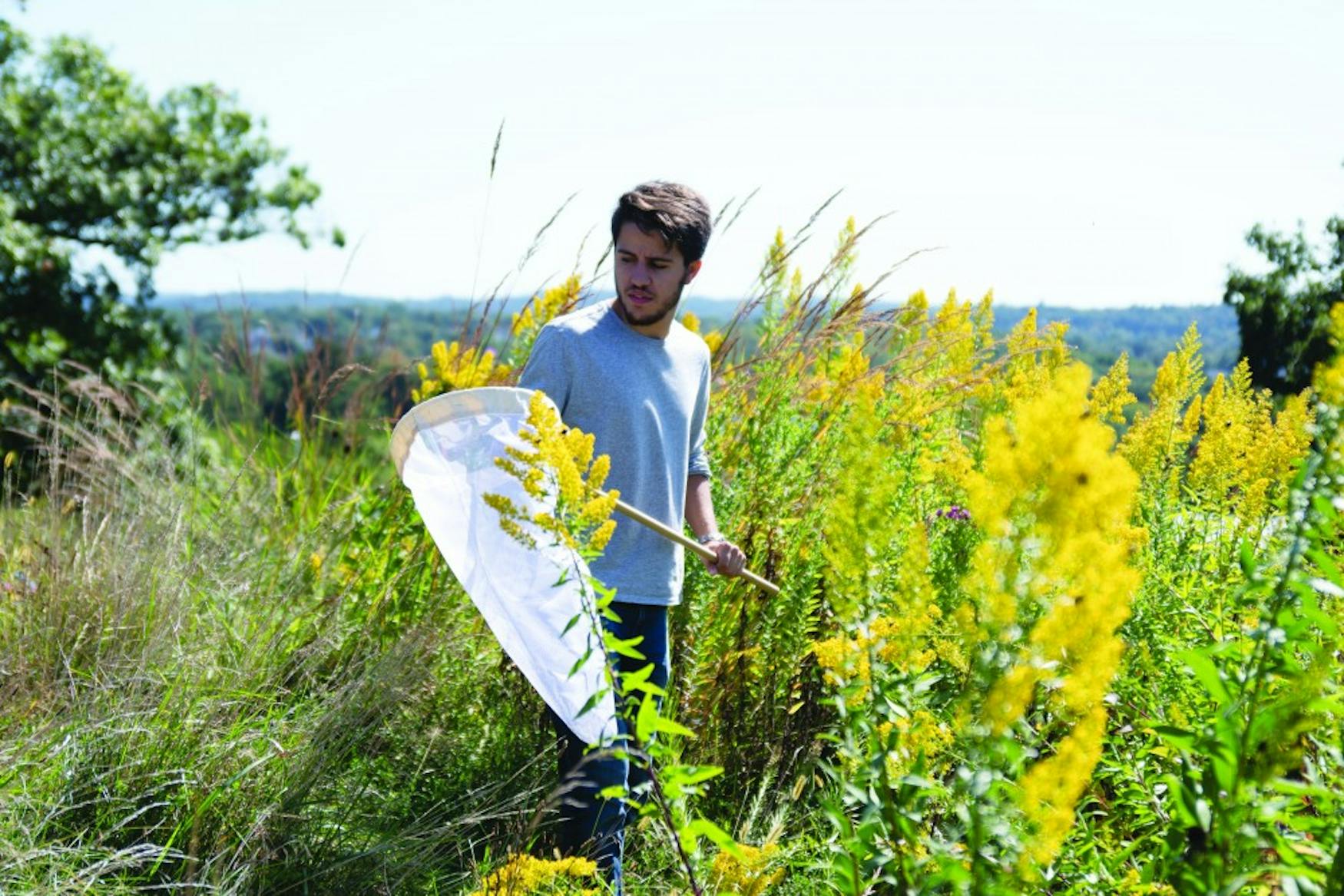Community uses app to identify campus wildlife
The event, Pollinator Bioblitz, was hosted by biology and environmental studies Prof. Colleen Hitchcock.
Students and professors gathered behind the Bassine Science Building this past Friday to search for and document various plants and animals living on campus, using the iNaturalist app to put a new twist on cataloguing their finds.
Prof. Colleen Hitchcock (BIOL), who led the event, has been using the iNaturalist app as part of the Conservation Biology Class for the past four years. Using iNaturalist is ingrained in the course as part of the core skills, where students are required to “engage in 21st[-]century learning” through the use of digital technology.
During the event, students added to the more than 20,000 observations made on campus in the app. There have been a confirmed 827 species identified across the Brandeis campus ranging from the Eastern Gray Squirrel to the Northern Mockingbird. Many of the attendees have been students of Professor Hitchcock. iNaturalist, however, is not limited to students, with many faculty and staff contributing to the documentation of species at Brandeis.
Over the course of an hour, 144 observations were made by students and faculty, and while many people stayed far away from bees and wasps, the attendees got as close as they could, fascinated by the different species. The event took place on the hill behind the Bassine Science Building, which is home to several species, including the Common Eastern Bumble Bee and the Butterfly Milkweed. The area was established “in 2015 as a result of a Conservation Biology course project and [the] Brandeis Sustainability Fund grant,” according to a page Hitchcock set up in iNaturalist for the event.

A TWIST ON ENVIRONMENTAL SCIENCE: Participants combined digital technology with nature to identify the species they observed through the iNaturalist app.
Of the 144 observations made, 45 species were identified. Seventy-seven percent of those identified were insects (35 species) while 15 percent were plant species (seven species). The most common species observed was the Locust Longhorn Borer. The Western Honey Bee, the Common Eastern Bumble Bee and the Great Black Digger Wasp were also among the most commonly documented organisms during the event.
While the majority of the observations recorded were of the species in their natural environments, Hitchcock brought Petri dishes and nets to catch the species that were hard to photograph. Species that students caught to document ranged from butterflies to grasshoppers.
iNaturalist was started by Nate Agrin, Ueda Ken-ichi and Jessica Kline at the University of California Berkeley’s School of Information in 2008. It later became an initiative of the California Academy of Sciences in 2014 and then a joint initiative with the National Geographic Society in 2017. According to the iNaturalist website, the app’s purpose is to “connect people to nature” while also generating “scientifically valuable biodiversity data from these personal encounters.”
The iNaturalist app allows users to quickly upload photos of what they see in nature. Users can either upload their photos or take a photo through the app. If the user recognizes the species they see, they can add its name to the photo’s information. If the user does not know what the species is, iNaturalist will suggest species that are visually similar. The user also has the option to leave the species identification blank, allowing the community to identify the organism.
Even Dankowicz ’19 is the top user for the Brandeis iNaturalist page, having identified 757 species. He has made 113,714 identifications for others all over the world.
Isaiah Freedman ’20 is another one of Brandeis’ top users and has identified 82 species at Brandeis. Freedman told the Justice he “first heard about iNaturalist while taking Conservation Biology” in the spring of 2018. Many of the assignments for the course involved using the iNaturalist app. Freedman said that although he initially used the app solely for assignments, he “quickly became really interested in learning about … biodiversity [he] could find all around [him].” He “often [goes] out of [his] way to take pictures of species [he does] not know in order to learn more about them.’’
In an email to the Justice, Hitchcock said that events such as the Pollinator Bioblitz are being used to help the Environmental Studies Department find “additional ways to connect what [students] do in [their] courses with the greater Brandeis community.” In addition, Hitchcock said that the aim was “to get more people outside of the [Environmental Studies] program engaged in observing and documenting the natural world.”



Please note All comments are eligible for publication in The Justice.